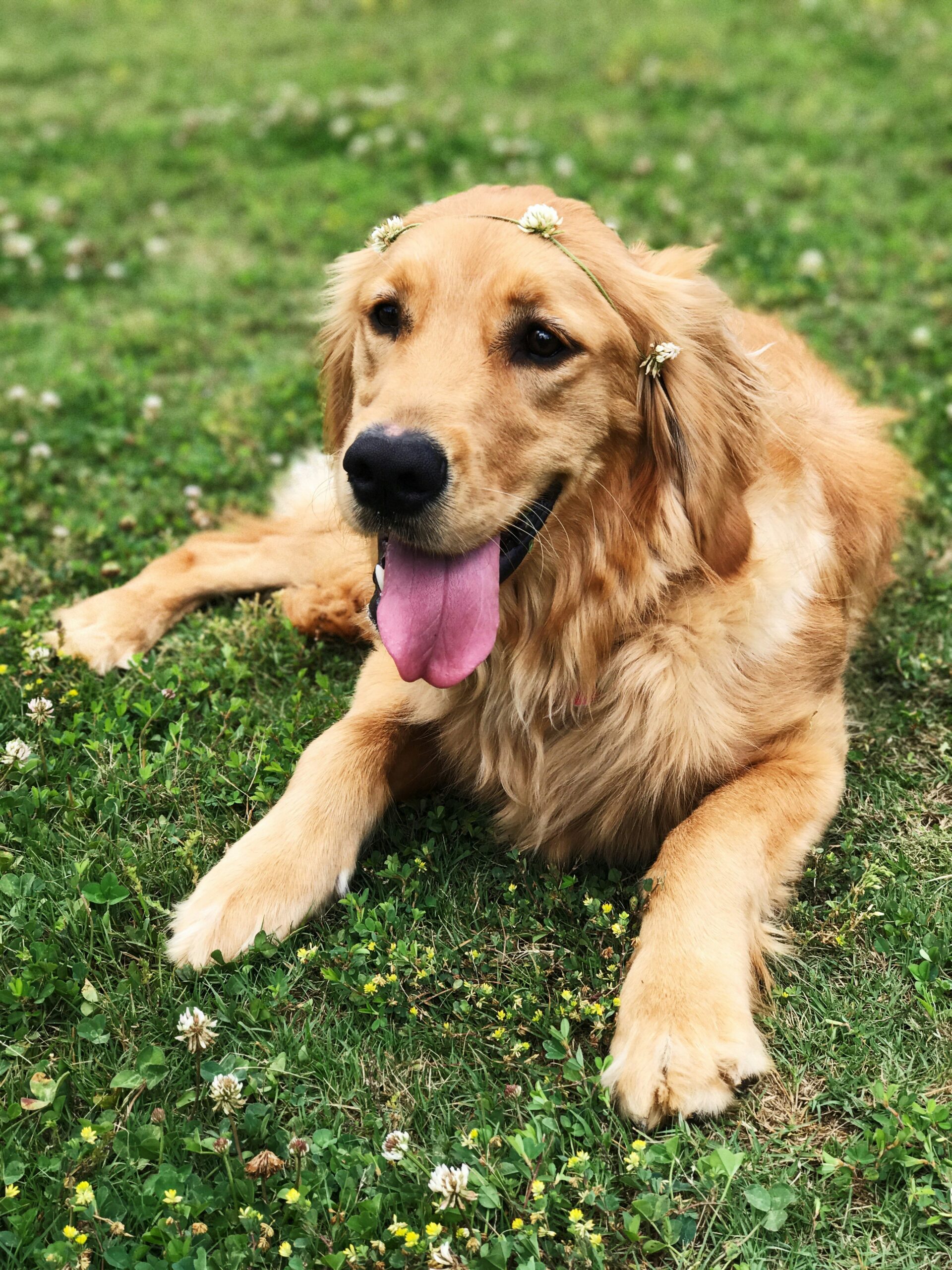When you think of the perfect family dog, the golden retriever undoubtedly comes to mind, wagging its tail and radiating love. With their friendly disposition and heartwarming loyalty, these pups are more than just pets; they’re cherished companions. But wait – what makes them the crème de la crème of family dogs? From a rich history steeped in noble origins to their playful antics with kids, let’s dive into the world of golden retrievers and uncover why they truly deserve the title of “ultimate family companion.” So grab a treat and buckle up for a tail-wagging adventure!
Characteristics of Golden Retrievers
Golden Retrievers are not just fetching machines; they embody the spirit of canine companionship. With their stunning golden coats and big, soulful eyes, it’s no wonder they’re top contenders for the “Best Family Dog” award! Here are some key characteristics that make the golden retriever a beloved choice:
- Temperament: These pups are friendly, intelligent, and devoted. They love to be social, whether with humans or other pets.
- Size: Golden retrievers are medium to large dogs, typically weighing between 55 to 75 pounds, making them robust yet gentle.
- Energy Level: Highly energetic, they thrive on play and exercise. Daily walks? Yes, please!
- Playfulness: Their love for games like fetch and tug-of-war means they’ll keep your family entertained for hours.
In summary, the golden retriever combines beauty, brains, and a big heart, making them not just pets but family members. So if you’re considering adding a furry friend to your home, the golden retriever may just steal your heart—and the spotlight!
History and Origin of the Breed
The golden retriever’s journey to becoming the adorable family companion we adore today is quite the tail-wagging tale! Originating in Scotland in the late 19th century, these pups were actually bred for a specific purpose – retrieving game from both water and land. Talk about a multitasking pooch!
Here’s a fun breakdown of their history:
- 1860s: The golden retriever emerged from the union of the now-extinct Yellow Tweed Water Spaniel and the irreplaceable Bloodhound. A dash of Setters and a sprinkle of Terriers, and voilà! The golden fluff we love was born.
- 1920s: By now, golden retrievers had made a splash both in hunting and as family dogs. Their gentle nature captivated hearts, and they began their rise in popularity.
- 1970s & Beyond: The AKC (American Kennel Club) recognized golden retrievers, solidifying their status as the ultimate family dog.
So, whether they are fetching tennis balls or cuddling on the couch, golden retrievers have held their place as a beloved breed for over a century! Isn’t that a golden story?
Temperament and Personality Traits
When you think of a golden retriever, picture a furry ball of joy with a floppy tail, and you’ve hit the nail on the head! These lovable canines are more than just pretty faces; they come with an outstanding temperament that makes them ideal companions. Here’s a quick peek into their personality traits:
- Friendly: Golden retrievers are social butterflies! They get along with kids, adults, and even the occasional mailman.
- Intelligent: Trainability? Check! Their smarts mean they pick up commands and tricks faster than you can say “fetch!”
- Affectionate: Buckle up for a slobbery kiss attack! These pups thrive on love and attention, and they’ll never shy away from cuddles.
- Playful: With an endless supply of energy, golden retrievers bring the fun to any family gathering—just toss a ball, and watch them fly!
In summary, if you want a family member who will make you laugh, provide affection, and be loyal to the core, a golden retriever fits the bill perfectly. They are definitely the ultimate family dog!
Training and Intelligence
When it comes to training, the golden retriever practically aces the test! These furry companions boast an impressive level of intelligence, ranking as one of the most trainable dog breeds. Here’s what makes them the doggy Einsteins of the canine world:
- Quick Learners: Goldens grasp commands faster than you can say “treat”! With consistent training, they can learn new tricks in no time.
- Positive Attitude: This breed loves to please, making training sessions smoother than butter. Use praise and rewards, and you’ll have a willing participant every time!
- Social Butterflies: Golden retrievers thrive on social interactions, which means they learn commands during playtime or family gatherings.
Comparison Table: Training Methods
| Training Method | Effectiveness | Fun Factor |
|---|---|---|
| Positive Reinforcement | ⭐⭐⭐⭐⭐ | 💖💖💖💖💖 |
| Clicker Training | ⭐⭐⭐⭐ | 💖💖💖💖 |
| Obedience Classes | ⭐⭐⭐⭐ | 💖💖💖💖 |
So whether you’re teaching your golden retriever to roll over or fetch the newspaper, the bond you’ll build through training is absolutely priceless. Happy training!
Health Considerations for Golden Retrievers
When it comes to the health of your beloved golden retriever, staying informed is key. Like any celebrity of the canine world, these pooches come with their own set of health quirks. Here’s what you should keep in mind:
- Common Health Issues: Golden retrievers are prone to certain conditions, including:
- Hip dysplasia
- Elbow dysplasia
- Certain cancers
- Heart issues
- Regular Vet Visits: A consistent check-up schedule helps catch potential problems early. Think of it as your furry friend’s wellness tour!
- Healthcare Expenses: Let’s face it—being a responsible dog parent means budgeting for various vet bills:
- Routine check-ups: ~$200 annually
- Surgery for common issues: $2,000–$3,500
How to Support Their Health
- Feed them a balanced diet rich in nutrients.
- Maintain a healthy weight through proper exercise.
- Keep up with vaccinations and treatments.
Remember, a happy and healthy golden retriever equals a wagging tail and endless cuddles! Keep the love coming, and they will thrive by your side.
Nutritional Needs and Diet
Feeding your golden retriever isn’t just about filling their bowl; it’s a fine art, much like crafting a gourmet dish! To ensure your furry friend thrives, consider the following essentials:
- Quality Dog Food: Choose high-quality kibble formulated for large breeds. Look for options with:
- A prominent protein source (chicken, beef, or fish).
- Healthy fats like omega-3 fatty acids.
- Portion Control: Golden retrievers love to eat, so it’s essential to avoid the “puppy dog eyes” syndrome. Stick to recommended serving sizes:
- Puppies (2-3 cups per day)
- Adults (2-4 cups per day, depending on size)
- Treat Wisely: Use treats for training, but keep them minimal. Overindulging can lead to the infamous “golden fluff!”
- Homemade Alternatives: Want to spice things up? Cook some lean meat or veggies as occasional treats. Just ensure they’re dog-approved—nix the onions!
Balanced nutrition keeps your golden retriever full of energy and ready for adventures. So, feed them well and watch your companion shine!
Benefits of Having a Golden Retriever as a Family Dog
When it comes to family dynamics, nothing quite compares to the joy of having a golden retriever around. These fluffy bundles of love bring an abundance of benefits that could make even the grumpiest cat jealous! Here’s why adding a golden retriever to your family is a golden opportunity:
- Unconditional Love: Golden retrievers are like furry therapists. Their affectionate nature and loyalty create a bond that’s hard to break.
- Fantastic Playmates: With their playful energy, golden retrievers keep your kids entertained for hours. They’re always up for a game of fetch or a romp in the park!
- Natural Protectors: Although they’re not known for being guard dogs, their loyalty makes them excellent at keeping an eye on the family and alerting you when something seems off.
- Eases Anxiety: Their calm demeanor helps to create a soothing atmosphere. Studies show that simply petting a golden retriever can lower stress levels.
- Encourages an Active Lifestyle: With regular walks and playtime, a golden retriever encourages the whole family to get moving.
In short, owning a golden retriever enhances family life in numerous ways, making them the ultimate companion!
Benefits of Having a Golden Retriever as a Family Dog
When it comes to choosing a family dog, the golden retriever shines like a diamond in the rough. Here’s why this breed often gets the gold star in family homes:
- Affectionate Companionship: Golden retrievers love to snuggle! They form deep bonds with family members, providing endless tail wags and warm cuddles.
- Great with Kids: Did you know that golden retrievers are known as gentle giants? They are patient, loving, and protective, making them superb playmates for children.
- Versatile Activities: Whether it’s fetch in the yard or a swim in the pool, golden retrievers are always up for fun. Their playful nature ensures that family members of all ages stay active!
- Intelligent Helpers: Golden retrievers are easy to train due to their intelligence and eagerness to please. This means fewer chaotic moments and more harmony in your household.
- Built-in Security: While they might not be guard dogs, their bark can alert you to strangers—making them great companions in your safe haven.
In summary, having a golden retriever enhances family life with love, laughter, and security. What’s not to love? 🐾
Common Misconceptions about Golden Retrievers
Ah, the beloved golden retriever! While these fluff balls charm us with their wagging tails and puppy dog eyes, they aren’t immune to misconceptions. Let’s debunk a few myths, shall we?
- They’re just lazy lap dogs: It’s easy to assume that their friendly demeanor means they prefer lounging around. In reality, golden retrievers are energetic and playful. They need regular exercise to keep their happy-go-lucky spirits thriving.
- Golden Retrievers are always friendly: While most golden retrievers are social butterflies, not every pup will love everyone they meet. Socialization is key to raising a well-adjusted dog.
- They don’t shed much: Oh, the golden fluff! Yes, these pups do shed, especially during shedding season. Frequent grooming is needed unless you fancy having a fur-covered home!
- All Golden Retrievers are experts at fetching: While retrieving is in their DNA, don’t assume yours will be a pro right away. Every dog has its quirks and preferences!
So, the next time you think of adopting a golden retriever, remember these wise nuggets and prepare for a rambunctious, loving, and wonderfully unique companion. 🐾
Common Misconceptions about Golden Retrievers
Ah, the golden retriever, a beloved icon in the canine world! However, as with any celebrity, there are a few misunderstandings floating around. Let’s bust some myths about this tail-wagging sensation!
Misconceptions:
- Goldens are hyperactive: While golden retrievers are energetic, they’re not boundless. They need daily exercise but often enjoy chill time too. Just like us after a long day!
- Goldens shed excessively: Yes, they shed, but regular grooming keeps fur fluffs at bay. Think of it as your cool way of keeping the house stylishly messy.
- Training is easy-peasy: Sure, golden retrievers are intelligent, but they still have their moments! Consistent training is key, so prepare to earn that “Best Owner” badge.
- They’re just friendly: While they’re social butterflies, some goldens need a bit of time to warm up. Remember, not every golden is an enthusiastic greeter!
The golden retriever is often misunderstood, but with a little knowledge, you’ll appreciate this charming breed even more. Embrace the joy and laughter that these pups bring into our families!
Frequently Asked Questions
Are Golden Retrievers good with children?
Absolutely! Golden Retrievers are like the babysitters of the dog world. They are known for their gentle and friendly nature, making them fantastic companions for children. Their playful energy and affectionate demeanor create a loving bond, and their patience with little ones is nothing short of impressive. Just keep those toys out of their mouths—Golden Retrievers are also notorious for snagging the best squeaky toys before the kids can!
How much exercise do Golden Retrievers need?
Golden Retrievers are the marathon runners of the canine realm! They thrive on exercise and require at least an hour of physical activity each day. This includes walks, playtime, and ample opportunities to chase after a ball or frisbee. Imagine having an enthusiastic furry friend who’s always ready to join you for a jog or a game of fetch—talk about motivation! A tired Golden is a happy Golden, so get ready to lace up those shoes!
Do Golden Retrievers shed a lot?
Oh boy, if you want a dog that doesn’t shed, a Golden Retriever might just be your furry version of a tumbleweed. They do shed quite a bit, especially during the changing seasons when they blow their coat like it’s confetti! Regular grooming—not just for you, but for your house too—will help manage that fluffy mess. But hey, lets be honest, who can resist Goldens’ adorable, fluffy coats? Just keep the vacuum handy!
Are Golden Retrievers easy to train?
Yes indeed! Golden Retrievers are the Einsteins of the dog park—and by that, we mean they’re incredibly intelligent and eager to please. Their friendly disposition and quick wit make them naturally inclined to pick up commands and tricks. With consistency, positive reinforcement, and a sprinkle of patience, you’ll have your pup performing like a well-rehearsed Broadway star in no time. So get ready to impress your friends with a dog that can ‘sit’, ‘stay’, and ‘fetch’ like an absolute champ!



